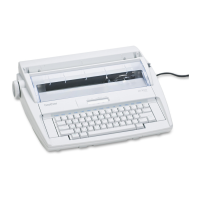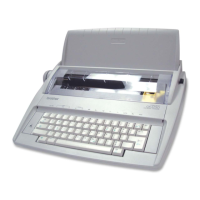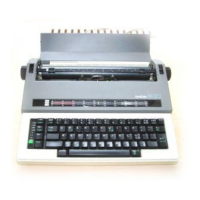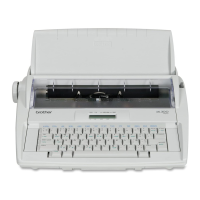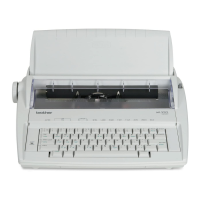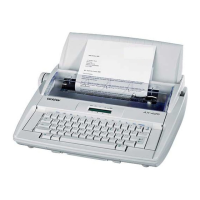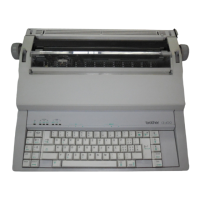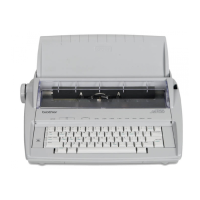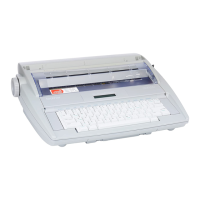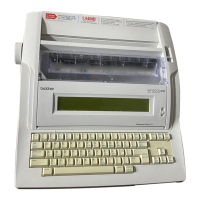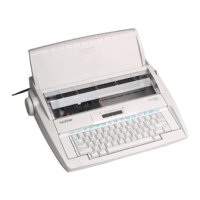Do you have a question about the Brother DP-525CJ and is the answer not in the manual?
Overview of the ink jet printer mechanism.
Components of the ink jet printer system.
Explains the operation of the ink jet printer.
Details the paper feed mechanism and its operation.
Describes the carriage assembly and its components.
Explains how carriage movement is controlled.
Details spitting, wiping, capping, and purging.
Explains the function of sensors like home position and PE sensor.
Operator-initiated functions for ink cartridge and print head cleaning.
Describes the keyboard assembly and its components.
Overview of major electronic components.
Role of the main PCB in system control.
Function of the switch PCB in power management.
How the keyboard FPC transmits status.
Function of the FDD module.
Details of the LCD module and backlight.
Operation of ink cartridge, motors, and sensors.
How the power supply generates stable voltages.
Circuit for initializing the system.
Details on CBIC (#8) and connected peripherals.
Control of ink jet head and motors.
Configuration and function of the switch PCB.
Explains keyboard operation and scanning.
Block diagram and control of the LCD display.
Circuits for generating LCD drive voltages.
FDD controller and module functions.
Overview of troubleshooting procedures.
Essential safety and handling precautions.
Safety advice for handling the equipment.
Procedures for preventing ESD damage.
Initial checks before attempting repairs.
Steps to confirm successful repair.
Visual guides for diagnosing problems.
Lists common problems and their causes.
Procedures for running self-tests.
How to enter the serial number for tests.
Performing the self-print test.
Overview of available self-test types.
Tests for checking LCD functionality and patterns.
Tests for verifying print quality.
Procedures for testing keyboard operation.
Tests for checking FDD functionality.
Checking for errors during disk reading.
Verifying the paper end sensor.
Testing carriage home position adjustment.
Executing the RS232C echo-back test.
Procedures for removing unit covers.
Detailed steps for removing the upper cover.
Procedures for disassembling the LCD module.
Step-by-step guide to dismantle the LCD unit.
Procedure for removing the keyboard assembly.
Instructions for removing and installing the carrying handle.
Steps to remove the ink jet printer assembly.
How to detach the printer assembly.
Breaking down the printer assembly into smaller parts.
Procedures for disassembling the paper feed unit.
Steps for disassembling the carriage assembly unit.
Procedures for adjusting the CA unit.
How to set the carriage home position.
Method for adjusting belt tension.
Instructions for removing the FDD assembly.
Procedure for removing and installing the switch PCB.
Steps to remove the main PCB.
How to remove the shield plate.
Information on lubricants and lubrication points.
List of recommended lubricants.
Safety and handling precautions for lubrication.
Step-by-step guide to replace the ink cartridge.
Procedures for cleaning the print head.
Automatic cleaning procedure.
Manual cleaning of nozzles and contacts.
Cleaning contacts in the carriage.
Specifications for electrical components.
Details on printing methods, capacity, and paper.
Specifications related to the keyboard.
Specifications for operating and storage conditions.
Physical dimensions and weight of the unit.
| Type | Electronic Typewriter |
|---|---|
| Display | LCD |
| Printing Method | Impact |
| Print Technology | Daisy Wheel |
| Power Source | AC adapter |
| Keyboard | QWERTY |
| Correction | Automatic |
| Paper Size | A4 |
